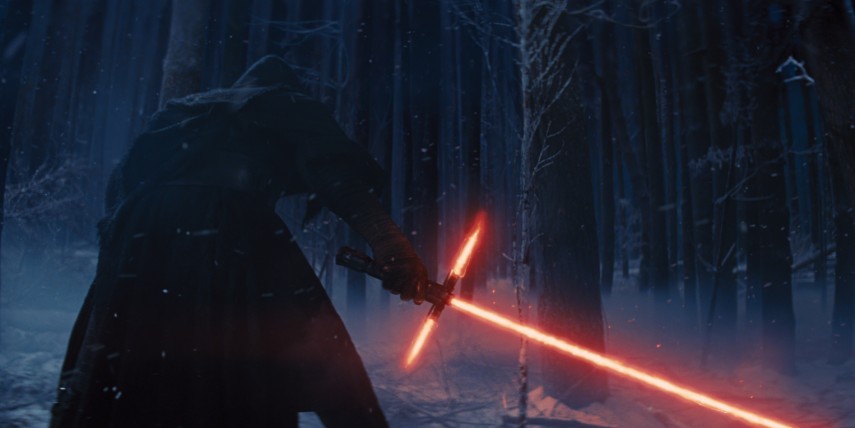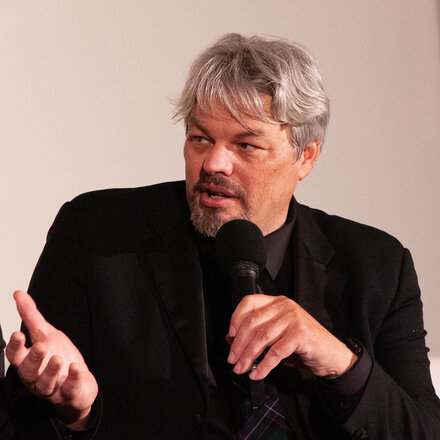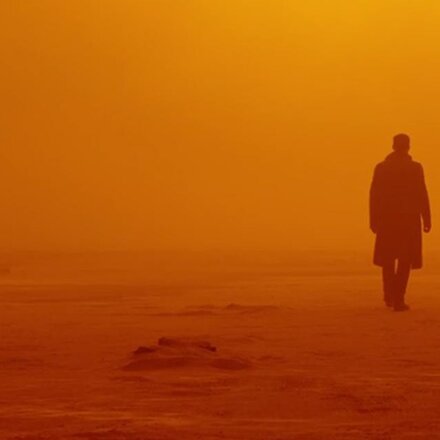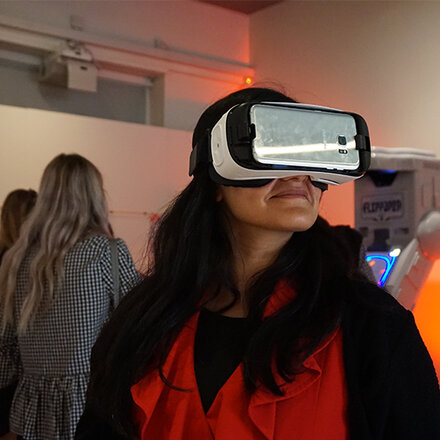Warning message
The subscription service is currently unavailable. Please try again later.
BAFTA Interview: Industrial Light & Magic (Part One)
In the first of a two-part exclusive interview, Director of Studio Operations, Sue Lyster, and Supervising Art Director, Kevin Jenkins, explain why visual effects powerhouse Industrial Light & Magic have opened a UK branch for the first time.
The conference room at Industrial Light & Magic London looks just like any other - neutral off-white colour scheme, large table, quirky-but-too-quirky art on the walls. Except for one strategically placed clue as to what goes on “upstairs” (a clapper board used on Star Wars: Episode VII - The Force Awakens) you’d never know you were sat in the recently opened London office of one of the film industry’s most important VFX houses. Then, Kevin Jenkins, art director on the Star Wars sequel and previously on Guardians Of The Galaxy, Edge Of Tomorrow, Superman Returns and more, brings out his hand-painted reference model of the Millennium Falcon, and there’s no doubting where you are. You’re sat (very close to) where the movie magic happens.
“London has been on ILM’s radar for a long time,” Director of Studio Operations Sue Lyster explains when asked why ILM has chosen to open a London office now. “Because of the talent that’s here. Harry Potter gave birth to the modern UK effects industry, and was definitely the impetus for it growing to the degree it has. It’s now got equal talent to the West Coast [of America] and WETA [in New Zealand].”
“It completes the set,” agrees Jenkins. “Now ILM is on the West Coast - in fact the only one left on the West Coast - in Vancouver, where the bulk of the industry is based for various tax breaks reasons, in London, where a lot of competition was coming from, and Singapore. It covers all the demographic areas.”
Lyster is in no doubt that ILM’s new office was a savvy business decision before anything else.
“Our competitors have grown a really strong industry in London,” she says. “People want to shoot their films here and the tax breaks encourage them to do post-production on their films here. That symbiosis has led to the growth of an industry over the last 10 years that has attracted and grown a really strong pool of talent. ILM can now serve filmmakers who are based in London, Bond being the best example. Spectre is the first Bond film ILM has ever worked on. They would never have had that chance if we weren’t in London. ILM were missing out on opportunities.”
“ILM coming to London brings another, major VFX player into the London market,” says Lyster. “That can only be good news for VFX artists and clients. While our London competitors may, in the short term, be concerned by ILM laying down roots here, in the long term I think it will lead to the VFX hub in London growing ever stronger. And it is also much easier now to work fairly seamlessly globally. All of our cities are exactly eight hours apart, so every eight hours somebody is starting work. Which means everybody gets a bit of Star Wars, for instance. We’re working towards a hub and spoke model - San Francisco is the hub for Star Wars, with Roger Guyett in San Francisco as the overall supervisor, but each of the other facilities has its own work and local supervisor, with Roger getting the final oversight and liaising with JJ. But we are the hub on Spectre. And if we work on the Harry Potter spin-off, we would be the hub on that one too.”
The appeal of ILM to special effects artists is a simple one, the reason behind the creation of the company in the first place back in the late 70s - Star Wars.
“Whether we like it or not, we all work in this business because we all went to see Star Wars in 1977,” says Jenkins. “It’s the same for all those people who started MPC, Framestore… I’m here because when I was a kid I read the Art Of Star Wars and I wanted to be Joe Johnston or Ralph McQuarrie. Now I’m working as an art director on Star Wars and I’m in the next Art Of Star Wars book. It’s like being an astronaut.”
“If you say to anyone here, why are you here?” says Lyster, “the answer is Star Wars. For guys in their 20s it’s even the prequels. Most have come from smaller owner-run companies. We both came from Framestore. We’ve taken a leap to a big American company.”
“A change where we got to work on Star Wars!” grins Jenkins.
“Kevin is already working on the next two Star Wars films, Rogue One and Episode VIII,” says Lyster, nodding.
“Along with a 100 other people here,” Jenkins laughs. “But I did design the Millennium Falcon’s new radar dish.” And that wouldn’t have happened if ILM hadn’t moved to London.
Read now: BAFTA Interview: Industrial Light & Magic (Part Two)






